Chive blossom vinegar is a perfect way to use chives that are bursting with blossoms this spring. If you are looking for a chive flower recipe, this is a simple and delicious way to preserve chive blossoms. I love a vinegar infusion, and this is one of my favorite recipes!
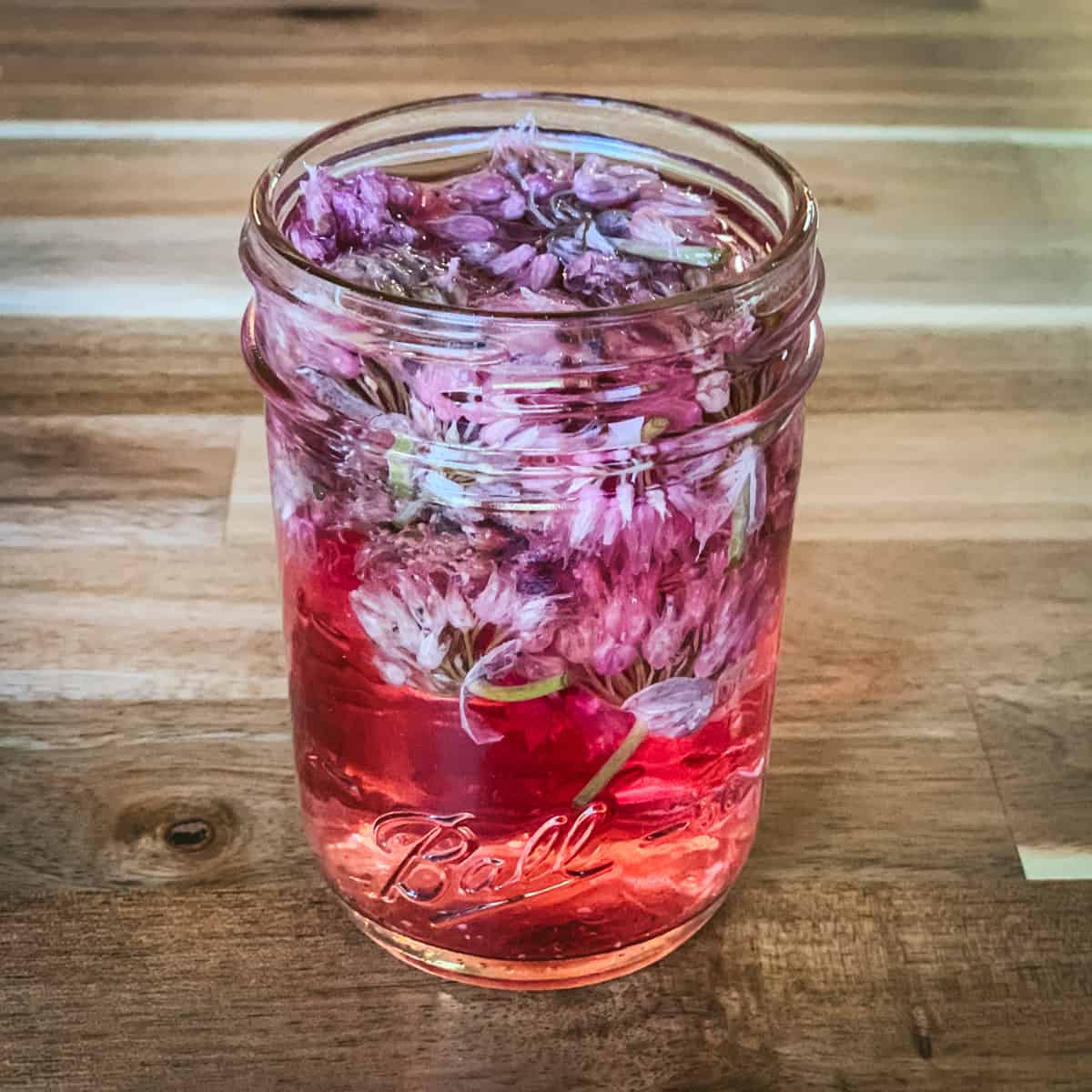
Want to save this post for later?
Chives are one of the easiest herbs to grow, and I think they belong in every backyard garden. They are perennial, meaning that they come back on their own each year, and are one of the first plants to pop up in early spring.
They are great companion plants as they help to deter unwanted pests, and bees love the blossoms.
Take a look at all of these beautiful chive blossoms! They are such a beautiful addition to the spring garden.
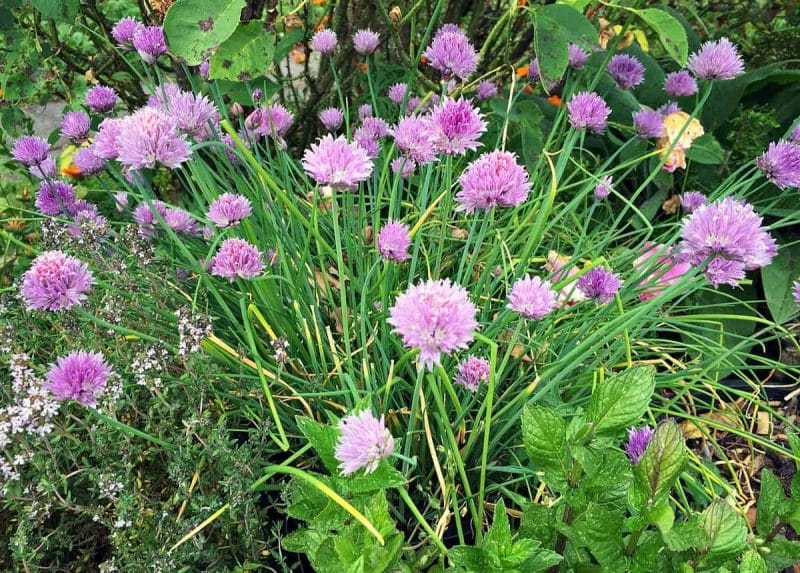
What to Do With Chive Flowers
Chive blossoms have a tasty onion flavor and can be added to salads, biscuits, compound butter, or any other way you would normally use chives.
Don’t let their beauty fool you, as they can be quite strong! It’s best to chop them up a bit, especially when using raw.
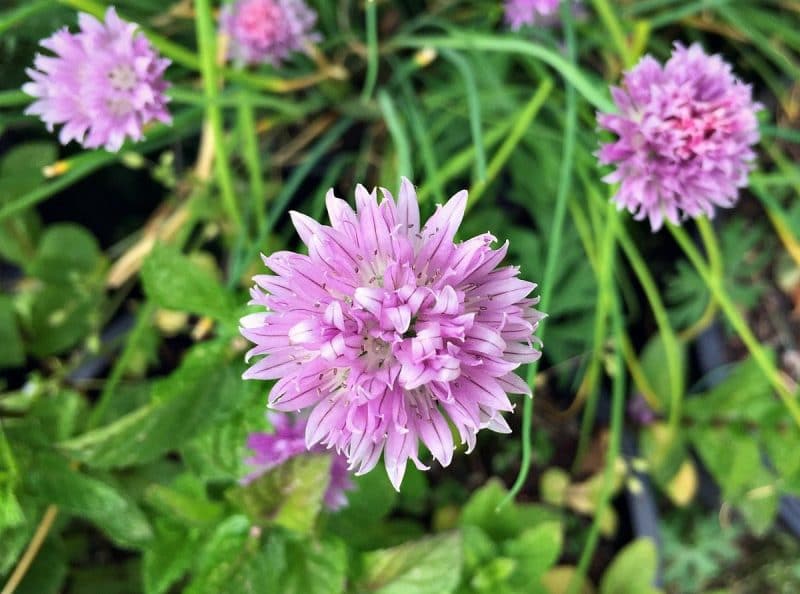
Bees love chive blossoms, so I always make sure to leave some out in the garden for them. I wonder what chive blossom honey would taste like? That’s something to try!
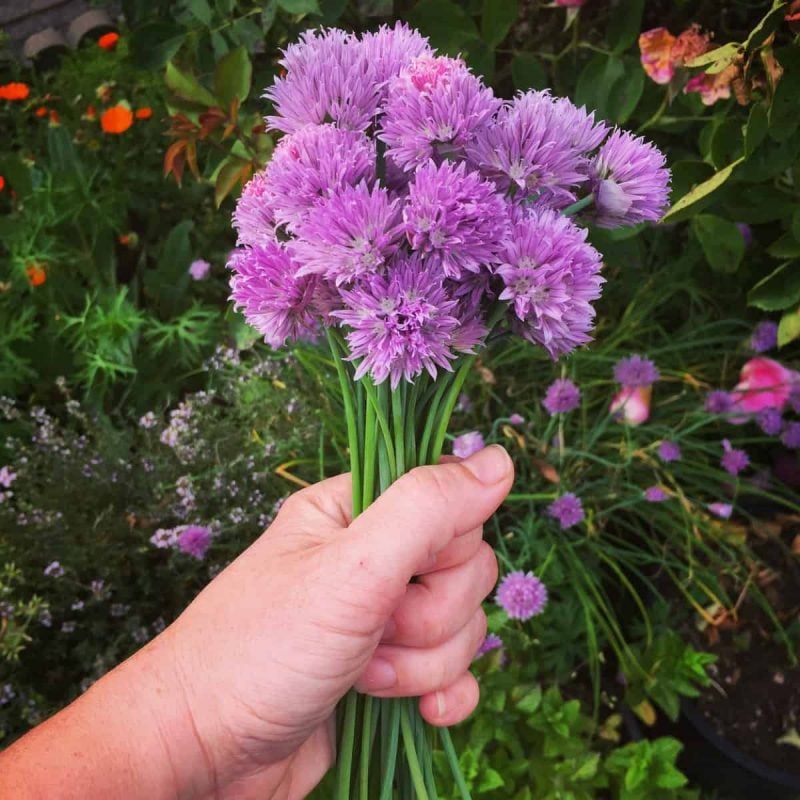
How to Make Infused Chive Blossom Vinegar
First, collect some chive blossoms and separate the flowers from the stalks.
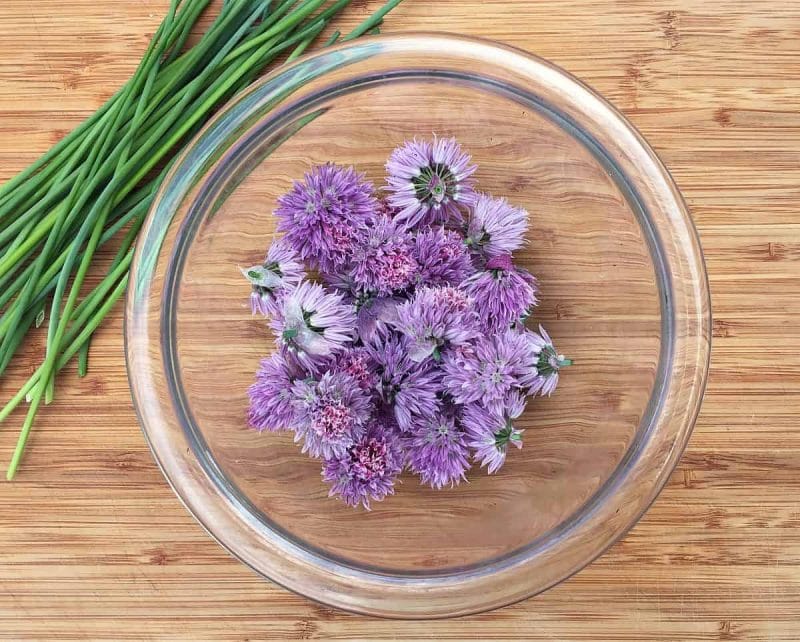
You may want to give the flowers a quick rinse to get all the bugs off if you see any.
Fill one jar about half full with the chive flower blossoms. Any size jars will work, it really just depends on how many chive blossoms you have and how much vinegar you want to make.
Add white vinegar to the jar to cover the chive blossoms. I used white balsamic but white wine vinegar also works well.
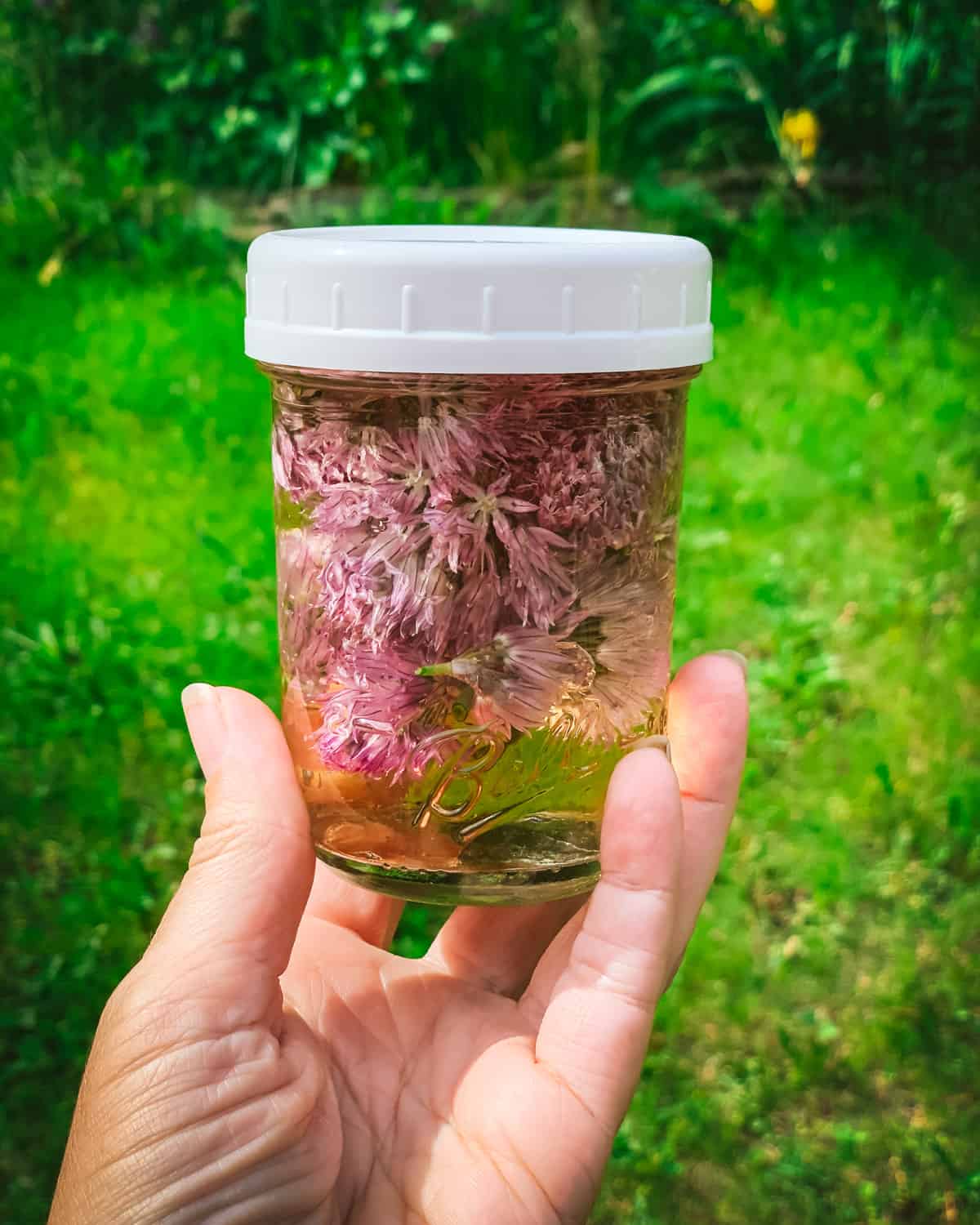
Tuck the jar in a cool place out of direct sunlight to infuse for about 2 weeks.
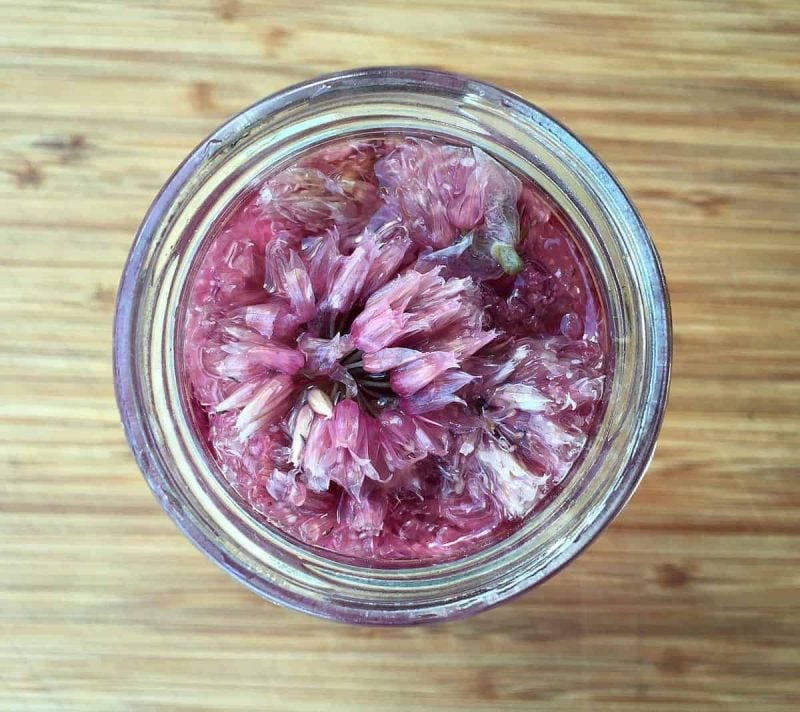
When finished infusing, the chive blossom vinegar will be a lovely shade of pink!
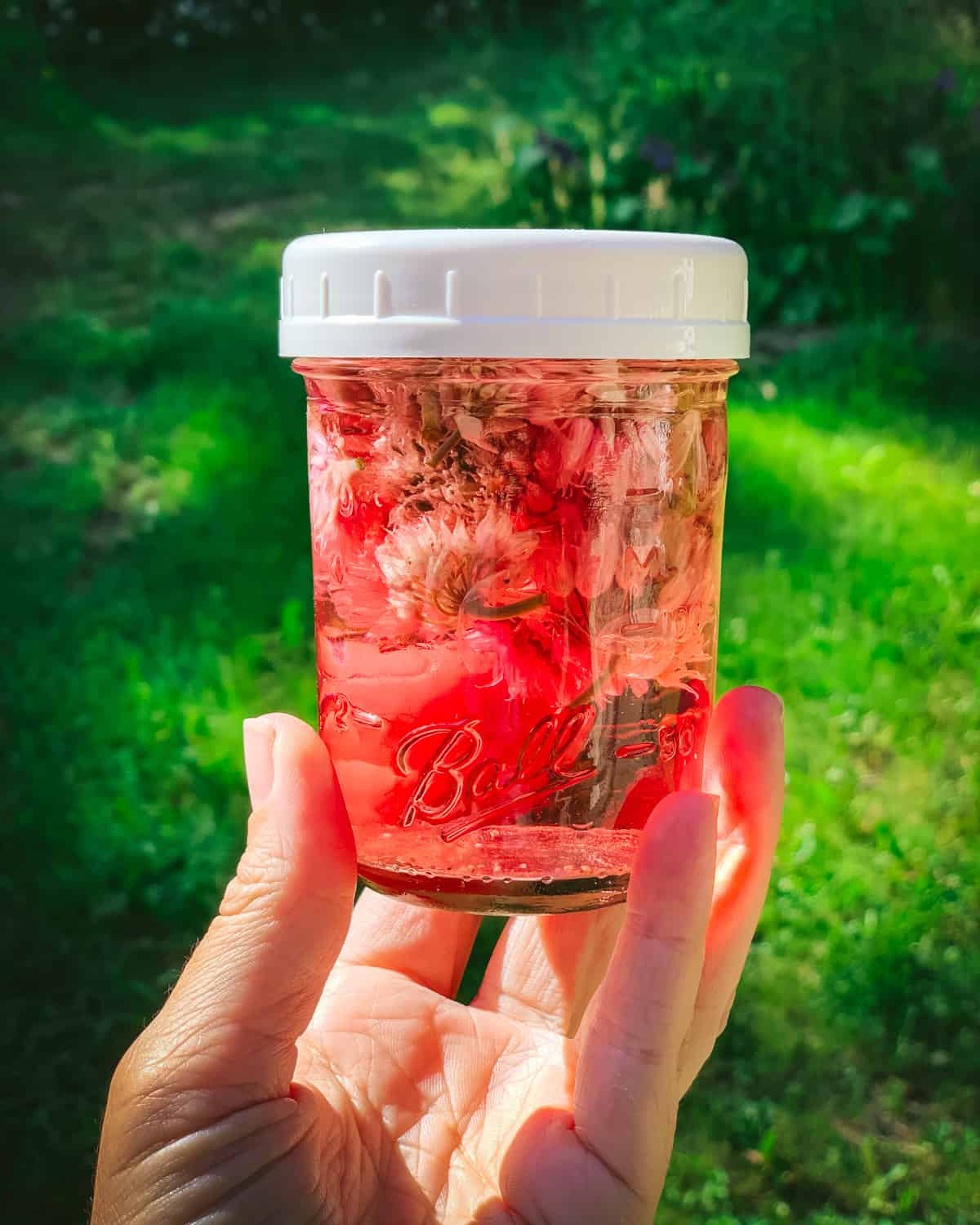
Strain out the chive blossoms and it’s ready to enjoy!
How to Use Chive Blossom Vinegar
Now, what to do with this lovely chive blossom vinegar?
Use as you would any vinegar when a kick of chives would be beneficial. Delicious on salads, vegetables, meats, pasta, pizza, or in stir-fries.
One of my favorite ways to use chive flower vinegar is to make a homemade salad dressing. Follow my recipe for balsamic vinaigrette made in a jar, substituting the chive vinegar for the balsamic. It turns out amazing!
This is probably one of the best salad dressings I have ever had. I added a few minced fresh chives to it as well. The chive flavor is definitely there, but it’s not overwhelming. Super tasty!
How to Store Chive Flower Vinegar
Store this delicious vinegar in your pantry, or in a dark corner of a shelf or counter. Chive flower vinegar will last a long time – probably forever!
It will get used up before it ever goes bad, as is the long-lasting nature of vinegar.
I hope this inspires you to do something fun with your extra chive blossoms this year!
More Vinegar Infusions
- Infused Dandelion Vinegar
- Nasturtium Flower Infused Vinegar
- Wild Violet Flower Infused Vinegar
- Mountain Vinegar: Foraged & Infused
Chive Blossom Vinegar
Ingredients
- 1/2 cup chive blossoms
- 1 cup white balsamic vinegar or white wine vinegar
Instructions
- Rinse the chives blossoms if needed and separate them from the stems.
- Place the chive blossoms into a clean jar. Add the white vinegar to cover the blossoms.
- Place a lid onto the jar, then put it in a cool place out of direct sunlight to infuse for about 2 weeks. When done, the vinegar will turn a lovely shade of pink.
- Strain out the blossoms and pour the vinegar into a clean jar with a lid. Store in a dark place.
Notes
- Serving Suggestions: Use as you would any vinegar when a kick of chives would be beneficial. Use on salads, vegetables, meats, pasta, pizza, stir-fries, or in a delicious salad dressing.
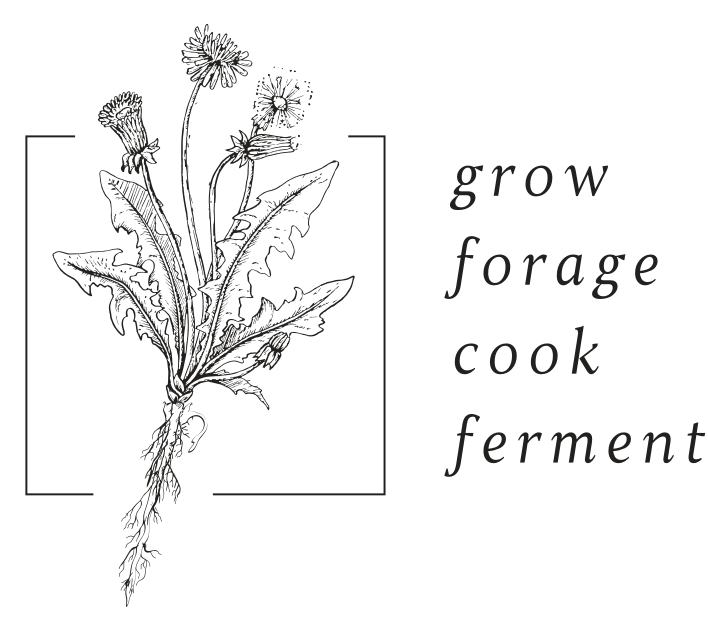
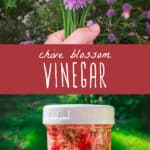
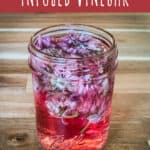
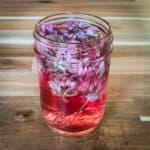

Can I use some of the stems in my chive blossom
Vinegar?
Yes, that should be fine.
could i use white vinegar?
Sure!
I tried out this recipe for the first time with the kids at the student garden where I am an assistant. Thanks so much for the idea! The kids had SO MUCH FUN with it and went a bit overboard – the jars were absolutely crammed to the top with flowers. Might you happen to know if the increased ratio of flowers to vinegar impact the taste and/or processing time?
Hi Jennifer. I’m so glad the kids loved this recipe! It shouldn’t impact the taste or processing time too much. Maybe it’ll have a little stronger flavor?
Thanks so much for your reply, that’s reassuring! I was worried that I might send the kids home with something un-useable by not getting the ratio right. I’m not sure how much they’ll like the vinegar (think that will more be something for their parents to make use of), but it’s amazing how they all love munching on the chives, including the flowers, while we’re working in the garden. They’ll be taking the vinegar home this week and I bet they will be thrilled at the color change. :-) It’s so pretty!
Wonderful. I hope the parents enjoy it very much!
When bottling the finished chive vinegar i noticed the bottles are 2 different colours. Any idea Why?
Maybe the color of the glass is slightly different? I honestly have no idea.
Can you use wild chive blossoms for this recipe as well
Sure!
How long will the chive oil last before going bad?
It’ll only last a few days unrefrigerated. Refrigerated for about a month. Even longer, in your freezer.
The text says to let it infuse TWO WEEKS in a dark place before you even use it. Olive oil is shelf-stable & so is vinegar. It might taste better cold on a salad.
What is the shelf life of these I have a husband who had a bone marrow transplant and should not inject bacteria. I did not see the shelf life.
The vinegar is shelf-stable and can last 3-6 months at room temperature. Refrigerated, about a year. The oil is unstable. It can last only a few days at room temperature and refrigerated, about a month.
Every year I infuse white wine vinegar with chive blossoms. I use it when I make potato salad. It adds such a nice taste.
This year I’ll try with salad dressing. Nice idea. Thanks!
You’re welcome. Enjoy!
thanks for the recept will be makeing both today .
Thank u so much for your input of your backyard creation. Still waiting for cold weather to depart. Bought a native elderberry bush as I would like to make my own tonic and cold syrup.
I am going to make many of your recipes this season. Looking forward to rose petal water. Thanks again
I have ‘Cha Cha’ chives in my garden this year – instead of flowers they grow these amazing little tufts of ‘troll hair’ – mini chives! They look awesome, but I do miss the purple flowers, so I am establishing some clumps of regular chives as well. I really want to make your chive blossom vinegar! Thanks for sharing :)
Good info to know. Thanks.